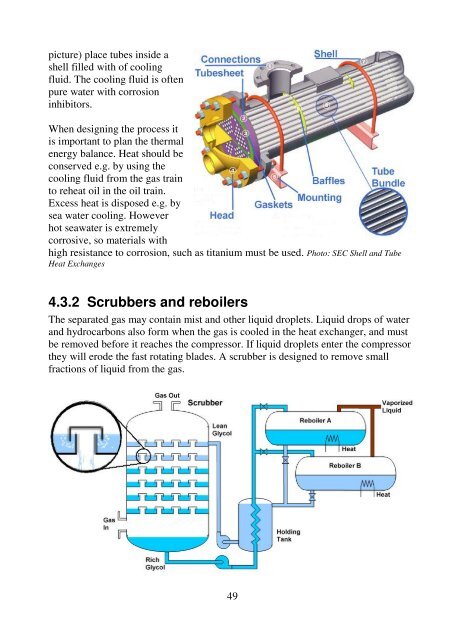Oil and gas production handbook - Process Control and ...
Oil and gas production handbook - Process Control and ...
Oil and gas production handbook - Process Control and ...
You also want an ePaper? Increase the reach of your titles
YUMPU automatically turns print PDFs into web optimized ePapers that Google loves.
picture) place tubes inside a<br />
shell filled with of cooling<br />
fluid. The cooling fluid is often<br />
pure water with corrosion<br />
inhibitors.<br />
When designing the process it<br />
is important to plan the thermal<br />
energy balance. Heat should be<br />
conserved e.g. by using the<br />
cooling fluid from the <strong>gas</strong> train<br />
to reheat oil in the oil train.<br />
Excess heat is disposed e.g. by<br />
sea water cooling. However<br />
hot seawater is extremely<br />
corrosive, so materials with<br />
high resistance to corrosion, such as titanium must be used. Photo: SEC Shell <strong>and</strong> Tube<br />
Heat Exchanges<br />
4.3.2 Scrubbers <strong>and</strong> reboilers<br />
The separated <strong>gas</strong> may contain mist <strong>and</strong> other liquid droplets. Liquid drops of water<br />
<strong>and</strong> hydrocarbons also form when the <strong>gas</strong> is cooled in the heat exchanger, <strong>and</strong> must<br />
be removed before it reaches the compressor. If liquid droplets enter the compressor<br />
they will erode the fast rotating blades. A scrubber is designed to remove small<br />
fractions of liquid from the <strong>gas</strong>.<br />
49
















